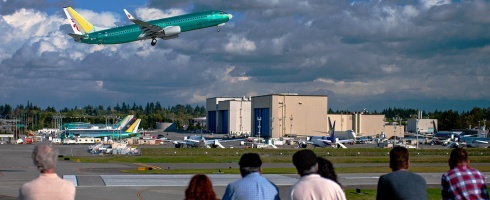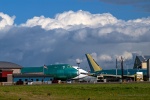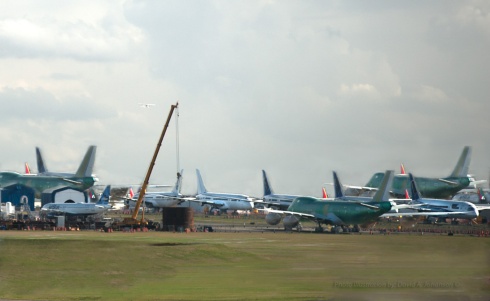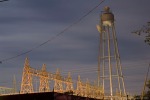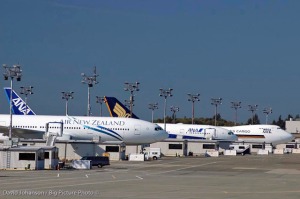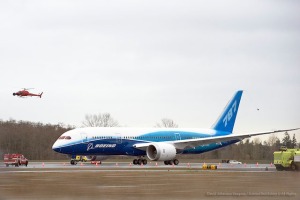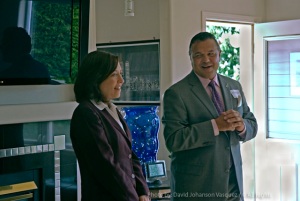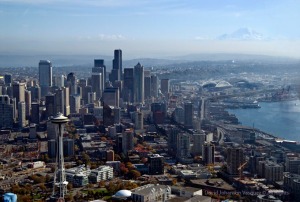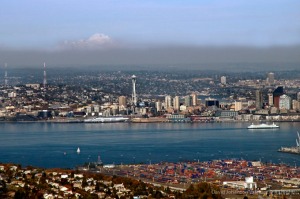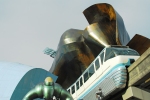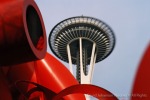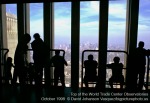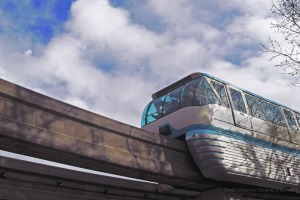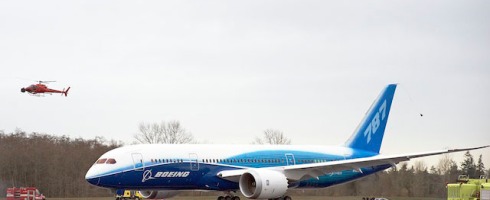
Multimedia eLearning program by: David Anthony Johanson © – All written & graphic content on this site (unless noted) was produced by the author. Add: 2.0 For an alternative graphic interface click here: https://bigpictureone.wordpress.com
This multimedia essay includes an eLearning program for secondary/post secondary education and community learning. Assessment tool: A quiz and answer key is located at the end of the program. Learning content covered: aerospace/airliner— aerospace engineering, avionics, economics & business, environmental footprint, financing, manufacturing, marketing, obsolescence management, technology. Learning concepts used: Applied Learning, Adult Learning, Competency-based Learning, Critical Thinking, Integrative Learning. Key: Words or phrases are italicized to emphasize essential concepts or terms for enhanced retention and learning.
[ Disclaimer: David Johanson is a former Boeing scientific photographer and currently has no stock holdings or a financial interest in: Boeing, Airbus or any other companies referenced in this program. Research in this article has been cross referenced using at least three sources, however, all perspectives and opinions represented in this program are those of the author. Subjects covered: aerospace technology, engineering, obsolescence management, marketing, economics and business subject matter. ]
Like seeing a mirage in the distance, shimmering sunlight reflects off rows of metal fuselages densely packed in the summer light. A surreal scene of Boeing jet airliners dominates the view, while forming a metallic wall around sections of a regional airport. 
Billions of dollars worth of jet airliners are now double parked around Paine Field, Snohomish County Airport, in Everett, Washington. “This development indicates the current success, Boeing is having at landing airliner orders and the result you’re seeing represents a record amount of aircraft production,”said Terrance Scott, a spokesman for Boeing Commercial Airplanes.
He said the Company is leasing this space from Paine Field so that planes can have the remaining work completed and be ready for delivery to their customers — also, this isn’t unique to Everett, but is happening at Boeing manufacturing facilities at Renton Field and at Boeing Field in Seattle.
“Boeing has always been a good neighbor and a fine customer for the airport, they are currently leasing areas to park their aircraft and the revenue generated is appreciated.” said Dave Waggoner, Airport Director at Snohomish County Airport — Paine Field.
The global economy’s steady growth has increased passenger traffic, which puts pressure on the airlines to purchase new aircraft for satisfying demand. Continued drops in jet fuel prices benefits air travel industry profits, giving further incentives for fleet investments. Additionally, with historically low-interest rates, lending institutions find new opportunities in aviation financing, enabling expansion of corporate sales. However, financing for used planes is another matter. Cash is drying up for previously owned jetliners — which puts pressure to part-out, then scrap relatively newer-used aircraft.
Could The New Normal Be Shorter Aircraft Service-Life For Airliner Fleets?
Recently, published reports noted a shift towards an assumed obsolescence and accelerated scraping of newer airliners — well before structural integrity or air worthiness becomes a problem, middle-aged aircraft are experiencing vulnerability to an early end-of-life. Clearly, accelerated scraping of newer aircraft is not due to any structural concerns, but rather, cyclical conditions of the industry. To appreciate these concerns a review of an airliner’s operational lifespan may help clarify some of the issues.
Aircraft manufactures use what is known as pressurization cycles to determine an airliner’s operational lifespan. A pressurizing cycle includes distinct aircraft flight activities — takeoff, climbing until it reaches a cruise altitude and then descending to make a landing. During this process, air is pumped into the fuselage to pressurize the cabin for passenger comfort. This repeated pressurization flexes or expands the fuselage — consequently stress is put on various connecting components, including fasteners and rivets, which holds the structural integrity of the plane together. After a certain number of landing pressurization cycles, stress or metal fatigue can begin to develop, eventually causing small cracks around the fasteners. Pressurization/landing cycles mainly concern the life of an aircraft’s fuselage, wings and landing gear.
Maintenance schedules and lifespan of jet engines are measured in the number of flight hours. Aircraft engines, followed by landing gear and then avionics are the most valuable components for part-out and dismantling specialist operations. Ultimately, engine condition is the major factor in an owner’s decision to part-out an aircraft.
For short flights, single or smaller double aisle craft is used to carry passengers, which may go through many landing or pressurization cycles for everyday operations. The more takeoffs and landings, means a shorter operational lifespan for the plane. On long overseas flights, wide body or jumbo jets such as 747s experience fewer landing cycles. These larger airliners, especially ones use for cargo operations can have longer lifespans of upwards of 20 or 30 years. In the U.S., the FAA requires an initial inspection on Boeing 737s, which have 30,000 takeoffs and landings using electromagnetic testing. Mandatory inspections are required for finding cracks in the fuselage or metal fasteners.
Boeing has a history of ‘over-engineering’ components of its aircraft, which is actually a good thing for ensuring passenger safety and for an extended service-life of the aircraft. Historical evidence of this conservative engineering practice is documented in WWII archival film footage of blown-apart B-17s returning from a mission and safely landing. There are more recent examples of Boeing commercial aircraft surviving dramatic inflight catastrophic failures, with most of the passengers and crew landing safely.
Compound Forces Working Against Long-Life-Cycle Aircraft
What are the current forces, which hasten the end-of-life of a commercial jet airliner? Recurring cycles or patterns of economic and technological events influences the commercial aircraft industry on a daily basis. Various ripple-effects of these cycles can quickly alter new and used aircraft asset valuation. Airline leasing companies have a major influence, in providing their customers with the aircraft assets they need. Unless the buying customer has solid credit, it’s doubtful they can secure financing for previously-owned airliners. Also, tax incentives exist for Airline companies to use depreciation right-offs by decommissioning all but the most advance aircraft assets. 
Maintenance requirements are a long-term, yet fluid, financial concern for a company’s airline fleet. The newer designed aircraft are manufactured with significantly fewer parts than previous models. Consequently, reduction in parts has an impact on reducing maintenance expenditures — including smaller service crews, hours spent on inspection and a reduction of overall repairs. Also, spare parts inventories for maintaining the aircraft’s optimum performance can substantially be reduced compared to an older aircraft. The cost savings benefits are compelling incentives for eliminating older, higher maintenance, aircraft assets.
As mentioned previously, the considerable reduction of parts used in manufacturing newer aircraft provides an immediate benefit of up to 20 percent weight reduction. Without compromising strength or aircraft structural integrity, the cost savings from less weight begins the day an airliner is put into service. Traditionally, fuel-efficiency is the “holy grail” used for selecting an aircraft — the amount of fuel-burn affects the daily operational cost of an airline company. After a decade of service an older airliner reaches mid-life, it may require upgraded and modification conversions to the aircraft’s wings (winglets) or need new fuel-efficient jet engines. However, this is a threshold of diminishing returns from such investments. As a result, keeping an older aircraft competitive with newer models may not pay-off at a certain point. That’s when retirement and parting-out the airliner begins to make economic sense and the aircraft’s end-of-life management begins.
Inevitable Problems Facing Aircraft Electronic Systems (Avionics) Obsolescence
A critical and perplexing problem facing commercial airliners is how to ensure its critical avionics systems, evolve and stay up-to-date. Avionics provides the central nervous system or a CPU framework for a commercial aircraft. It’s a marvelous matrix of advanced electronic systems technology, which constantly communicates with itself, the pilots and the outside world. More so than any other components making up an aircraft’s technological system, its management and functionality duties are beyond comparison. Each year avionics systems physically contract in size, yet they expand immensely in functionality and system management.
 Here’s an example to help clarify this dichotomy of physical contraction and expansion of technical functionality. Your smartphone can be used as a basic representational model for avionics obsolescence. The phone you’re holding in your hand has a superior mobile graphics processor and sheer number-crunching power advantage over IBM’s Deep Blue supercomputer of the late 1990s. Yet, you can hold your phone in hand, compared to Deep Blue, which was the size of a large refrigerator. However, advanced your smartphone is today, a year from now it’ll be obsolete and two years from now… a quaint antique. If you grabbed your smartphone and considered the example, you just experienced Moore’s law of observation — ‘over the history of computing hardware, the number of transistors in a dense integrated circuit doubles approximately every two years.’
Here’s an example to help clarify this dichotomy of physical contraction and expansion of technical functionality. Your smartphone can be used as a basic representational model for avionics obsolescence. The phone you’re holding in your hand has a superior mobile graphics processor and sheer number-crunching power advantage over IBM’s Deep Blue supercomputer of the late 1990s. Yet, you can hold your phone in hand, compared to Deep Blue, which was the size of a large refrigerator. However, advanced your smartphone is today, a year from now it’ll be obsolete and two years from now… a quaint antique. If you grabbed your smartphone and considered the example, you just experienced Moore’s law of observation — ‘over the history of computing hardware, the number of transistors in a dense integrated circuit doubles approximately every two years.’ 
Now, imagine trying to update a complex system such as an airliner’s avionics bay, in five-years, 10-years or 15-years. The installation and the majority of electronic systems are not made by the Aircraft’s original equipment manufacturer (OEM) such as Boeing or Airbus. Moreover, the vendors or suppliers 10 or 15-years from now who were the OEM, could be out of business. In the meantime, new replacement components may have to substitute the obsolete equipment. However, the aircraft industry is highly regulated by government agencies, which require strict certification of equipment modifications. As a result of these constraints, aircraft manufacturers such as Boeing, developed obsolescence management strategies to help mitigate these ongoing concerns. But there are always unforeseen obstacles and many moving parts to coordinate before the necessary electronic components are available when needed. Clear, transparent communication is necessary between internal engineering and purchasing departments. Sucessful collaboration at all levels can present major challenges, especially if the objectives and timetables are not each group’s priority.
So aircraft avionics are the vulnerable underbelly of airliner obsolescence — with financial consequences associated with accelerated, technology — necessitating complex and expensive electronic upgrades.

Airspace Navigation Service Providers (ANSP), which includes the FAA and the European counterpart EASA — have established new mandate requirements for avionics component upgrades. The purpose of this technology is for enhanced data link digital communication, which interacts instantly with aircraft Flight Management Systems (FMS). These requirements include, Automatic Dependent Surveillance-Broadcast (ADS-B), Controller-Pilot Data Link (CPDLC) and the Future Air Navigation System (FANS) enables text messaging and global position through satellite communications. The new civil aviation mandates are part of the next generation air traffic computer technology called NextGen, which represents air traffic infrastructure’s future for the next 10 to 15 years.
Used Aircraft Components, Harvested For Premium Returns, Is the Retired Airliners Last Call In Service Before Its Final Destination.
Perhaps aircraft boneyards are flying under the radar as virtual gold mines, as refurbished parts are easily sold at market value. The savings of buying used, over new aircraft parts is incentive for expanding the market. Engines, landing gear and avionics are the most expensive components of an aircraft. These prized components are a highly valued commodity and are quickly snapped up. Specialized systems are not manufactured by companies such as Boeing or Airbus, but by outside OEM. Parts sold brand new by the manufacturer are considerably more expensive than buying used.
Next Generation aircraft such as the Boeing 737-600 and even a 737-800, which was reported had a hard-landing, reached their end-of-life as scrap. Also, Airbus has had similar, newer single-aisle aircraft models reached their final destination in the aviation boneyard. Aircraft Fleet receivable Association (AFRA) estimates 600 commercial jet airliners are scrapped yearly. By 2023 it’s estimated the number of commercial airliners scrapped will reach 1000 per-year.
.
Efforts Of The Aviation Industry To Leave A Smaller Environmental Footprint.
In 2008, the Boeing Company reached out to Airbus in collaboration, with the goal to vastly improve aircraft recycling technology. Airbus estimates they are recycling 85 percent of the entire aircraft, the remaining cabin interior amounted to 15 percent and was the only materials added to landfills. 
The best takeaway from the issues surrounding accelerated airliner service-life is that less fuel is consumed by the newer fleets. As older, less efficient aircraft are replaced, a 20 percent reduction in fuel emissions will not enter the atmosphere from the next generation aircraft replacements. If the world’s commercial airline manufactures continue to devote more effort towards efficient recycling of past generation aircraft, we can look forward to clearer skies ahead. ~

.
Special thanks to The Future of Flight Museum, for allowing photos to be taken from their excellent observation deck. http://www.futureofflight.org
Airliner Obsolescence Quiz (Read the entire question before answering)
1. ) What three economic incentives are currently influencing airlines to purchase new aircraft for satisfying travel demand. ________________________________ _________________________________ & ________________________________
2. ) (True or False) Structural integrity or air worthiness of current generation airliners are the main issue why these aircraft are being retired early. _______ If you answered false, give at least one other reason why this is occurring. __________________________________________________________
3. ) Aircraft manufactures use _____________________ cycles to determine an airliner’s operational lifespan.
4. ) What are three distinct aircraft flight activities used to determine an airliner’s operation lifespan? _________________________ __________________________ ____________________________________________
5. ) Maintenance schedules and lifespan of jet engines are measured in the ________________ hours.
6. ) Aircraft _________ followed by ____________ and then ___________ are the most valuable components for part-out and dismantling specialist operations. Fill in the blanks above by selecting the proper order of component value, using the following list: (bulk heads) (wire bundles) (avionics) (engines) (landing gear)
7. ) Selecting from the choices listed below, which aircraft will typically experience more pressurization cycles and why? A or B ____________ explain why _____________________________________________________________ ______________________________________________________________________ A. Jumbo jet (larger, multi isle aircraft) which is used for longer, overseas flights. B. Smaller, single isle jet airliners, which are used more for shorter, domestic flights.
8. ) Multi-isle airliners or jumbo jets, used for longer international flights or for cargo operations can have longer lifespans of upwards of ____ – ____ years. Select the best match from these sets: 5 − 15, 10 − 15, 20 − 30, 30 − 40 years.
9. ) Explain why a larger commercial jet airliner, which flies longer over sea routes, would have a longer operational life than a smaller aircraft, which is used on much shorter routes? __________________________________________________ ________________________________________________________________________
10. ) What procedure is required by the FAA for a Boeing 737 airliner, which completes 30,000 takeoffs and landings?__________________________________ ________________________________________________________________________
11. ) The newer designed aircraft are manufactured with significantly fewer parts than previous models, list at least two reasons why this is an advantage and would make older aircraft obsolete? ________________________________________ ______________________________________________________________________
12. ) What traditionally has been considered the “holy grail” used by the airline industry for selecting an aircraft? _________________________________________
13. ) When permanent retirement and parting-out the of an airliner begins to make economic sense, what form of management begins for that aircraft? ____________________ Select one of the following: end-of-days, end-of-life, retirement cycle, recycle phase.
14. ) What critical system of an airliner is considered its “central nervous system” or CPU for overall control of the aircraft? ________________________________ Give at least two reasons why this system contributes to a jet becoming obsolete? _______________________________________________________________ ________________________________________________________________________
15. ) Approximately how many aircraft are permanently retired or scrapped in a year? __________________ By 2023, how many aircraft are expected to be scrapped? _______________________________________________________________________
16. ) Regarding commercial aircraft recycling technology, what percentage does Airbus estimate it is recycling of the entire airliner ___ 40 %, 65 %, 75 % or 85 % What percent of the aircraft is not recyclable ___ 60 %, 50 %, 25 %, or 15 % What part of the airliner is not recyclable ____________________ and where does it end up? ___________________________
The answer key is at the very bottom, after program sources & related links ↓
.
Sources & Related Subject Matter Links
This link shows live air traffic anywhere in the world. View how congested the sky’s are over the world’s busiest airports.
http://www.flightradar24.com/47.79,-122.31/7
Aircraft Bluebook – Used for aviation asset valuation
http://www.boeing.com/boeing/companyoffices/aboutus/brief/commercial.page
http://www.airbus.com/innovation/eco-efficiency/aircraft-end-of-life/
http://www.airspacemag.com/need-to-know/what-determines-an-airplanes-lifespan-29533465/?no-ist
http://www.faa.gov/aircraft/air_cert/design_approvals/air_software/media/ObsolescenceFinalReport.pdf
http://aviationweek.com/awin/nextgen-obsolescence-driving-avionics-refurbs
http://www.theguardian.com/business/2013/jun/11/boeing-commercial-planes-double-asia-pacific
http://www.airliners.net/aviation-forums/general_aviation/read.main/5740876/
http://avolon.aero/wp/wp-content/uploads/2014/06/Aircraft_Retirement_Trends_Outlook_Sep_2012.pdf
Article & photos on U.S. aircraft boneyards
http://www.johnweeks.com/boneyard/
http://www.dailymail.co.uk/sciencetech/article-2336804/The-great-aviation-graveyard-New-aerial-images-hundreds-planes-left-die-American-deserts.html
Article, photos & interactive map of U.S. aircraft boneyards
http://www.airplaneboneyards.com/commercial-aviation-airplane-boneyards-storage.htm
Excellent aerial video of Airplane Graveyard (Mojave Airport, California)
http://www.youtube.com/watch?v=6RjaoR7Zk2s
Airliner Obsolescence Quiz Answer Key
1. ) Satisfying increased travel demand Fuel cost savings & Historically low-interest rates for financing new aircraft
2. ) True Newer aircraft are replacing airworthy, older aircraft due to much less operating cost, including fuel savings and maintenance issues.
3. ) Pressurization or Landing cycles
4. ) Takeoff Climbing to cruise altitude Landing
5. ) Number of flight hours
6. ) Engines landing gear avionics
7. ) B Shorter service routes typically involve more landing and takeoffs as the airliner satisfies domestic travel demand
8. ) 20 − 30
9. ) An airliner flying overseas route would most likely have fewer takeoffs and landings, due to the longer flight time required to reach its destination
10. ) Electromagnetic testing for finding cracks in the fuselage or related components
11. ) Fewer parts can result in an airliner weighing up to 20 percent less than older models, which can correlate to the same percentage of fuel savings. The maintenance cost is substantially lower allowing for more savings over older aircraft with more component parts.
12. ) Fuel-efficiency
13. ) End-of-life
14. ) Avionics electronic components used for avionics may not be available or upgradeable due to obsolescence upgrading obsolete avionics may require expensive redesign
15. ) Up to 600 1000
16. ) 85 % 15 % Cabin interiors Landfills
[contact-form][contact-field label="Name" type="name" class="GINGER_SOFATWARE_correct">/][contact-field label="Email" type="email" class="GINGER_SOFATWARE_correct">/][contact-field label="Website" class="GINGER_SOFATWARE_correct">/][contact-field label="Comment" type="textarea" class="GINGER_SOFATWARE_correct">/][/contact-form]

